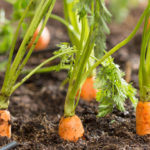 The use of data in agriculture is growing considerably, but to date, most of the data has been harvested above ground. Often that’s fine, but for root crops, such as potatoes and carrots that grow underground, this can mean diseases and deficiencies are hidden from the farmer until the crops are harvested.
The use of data in agriculture is growing considerably, but to date, most of the data has been harvested above ground. Often that’s fine, but for root crops, such as potatoes and carrots that grow underground, this can mean diseases and deficiencies are hidden from the farmer until the crops are harvested.
This also presents difficulties for breeders, who are often ignorant of whether crops are responding well to temperature changes or droughts. The ability to know what nutrients or growing conditions a crop needs can be vital in maximizing the productivity of the crop.
New research from the International Center for Tropical Agriculture (CIAT) shows that machine learning can play a part in filling in these blanks.
“One of the great mysteries for plant breeders is whether what is happening above the ground is the same as what’s happening below,” the researchers explain. “That poses a big problem for all scientists. You need a lot of data: plant canopy, height, other physical features that take a lot of time and energy, and multiple trials, to capture what is really going on beneath the ground and how healthy the crop really is.”
Filling the blanks
The researchers explain that it’s easier and cheaper than ever before to capture data using drones, but the processing and analyzing of the huge quantities of data generated can take a lot longer, assuming the skills even exist to do so.
The researchers took the drone images and utilized a platform called Pheno-i to merge data captured from thousands of high-resolution images, and using machine learning to process them into a spreadsheet format that shows scientists how the plants are responding in the field in real-time.
It’s an approach that the team believe will allow breeders to respond immediately to the situation, and supply fertilizer if a nutrient is lacking, or water similarly. It also provides scientists with better insight into which crops perform best or respond to situations, such as droughts and climate change.
“We’re helping breeders to select the best root crop varieties more quickly, so they can breed higher-yielding, more climate-smart varieties for farmers,” the researchers say. “The drone is just the hardware device, but when linked with this precise and rapid analytics platform, we can provide useful and actionable data to accelerate crop productivity.”